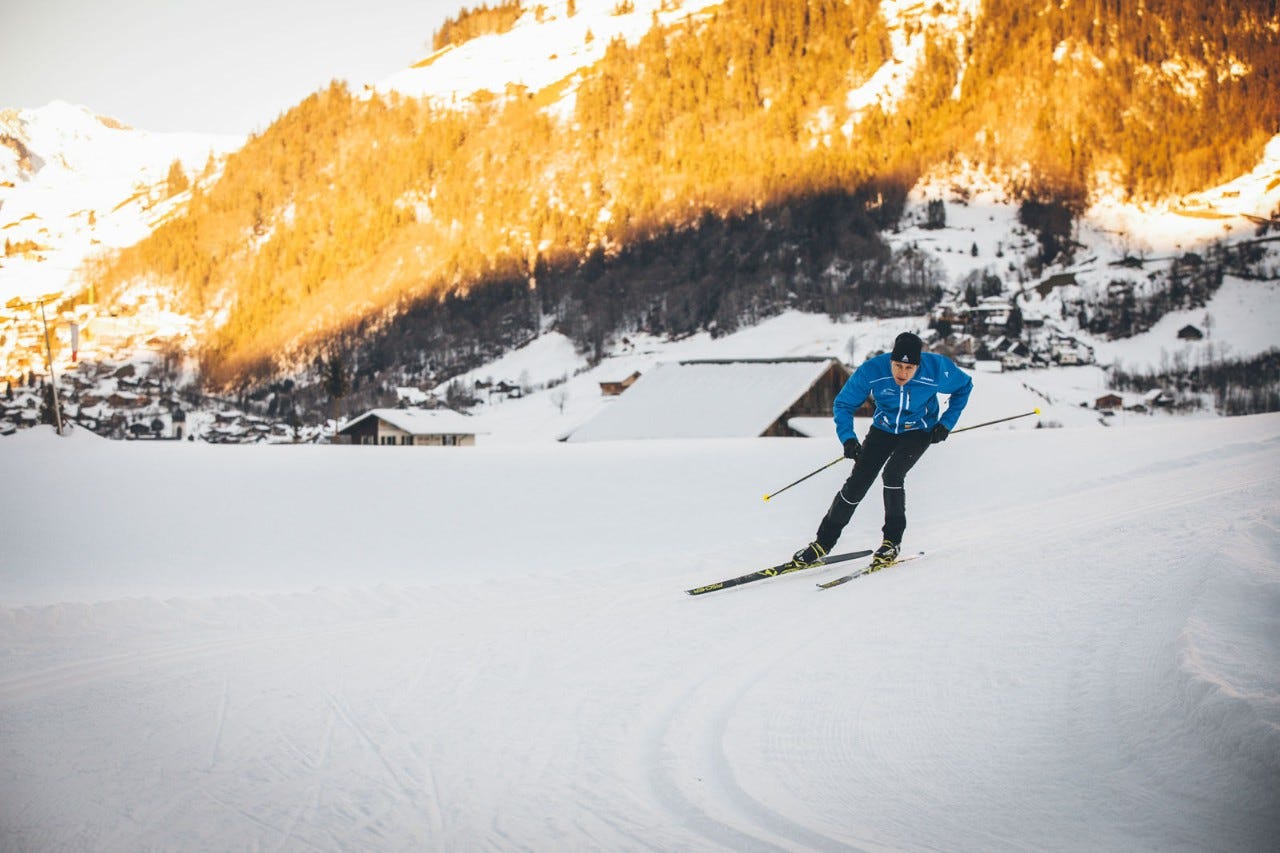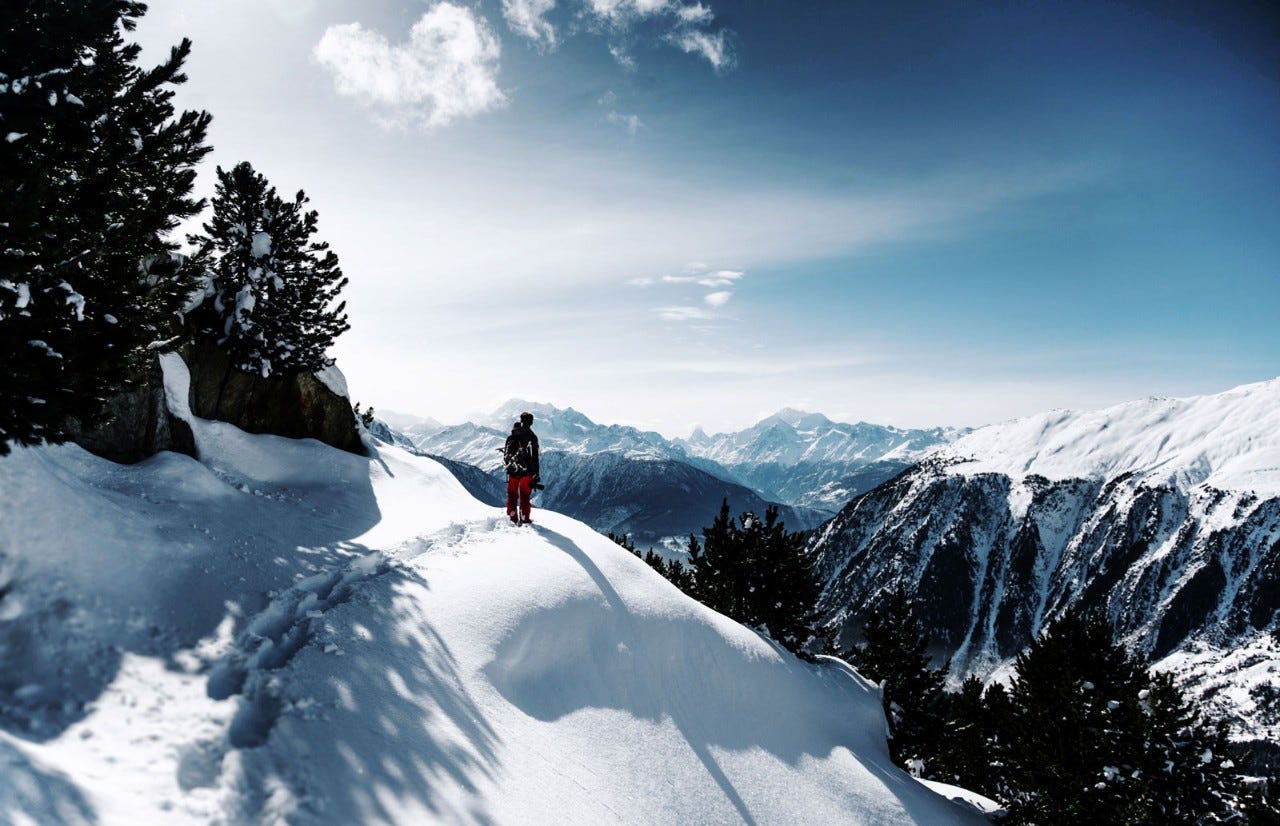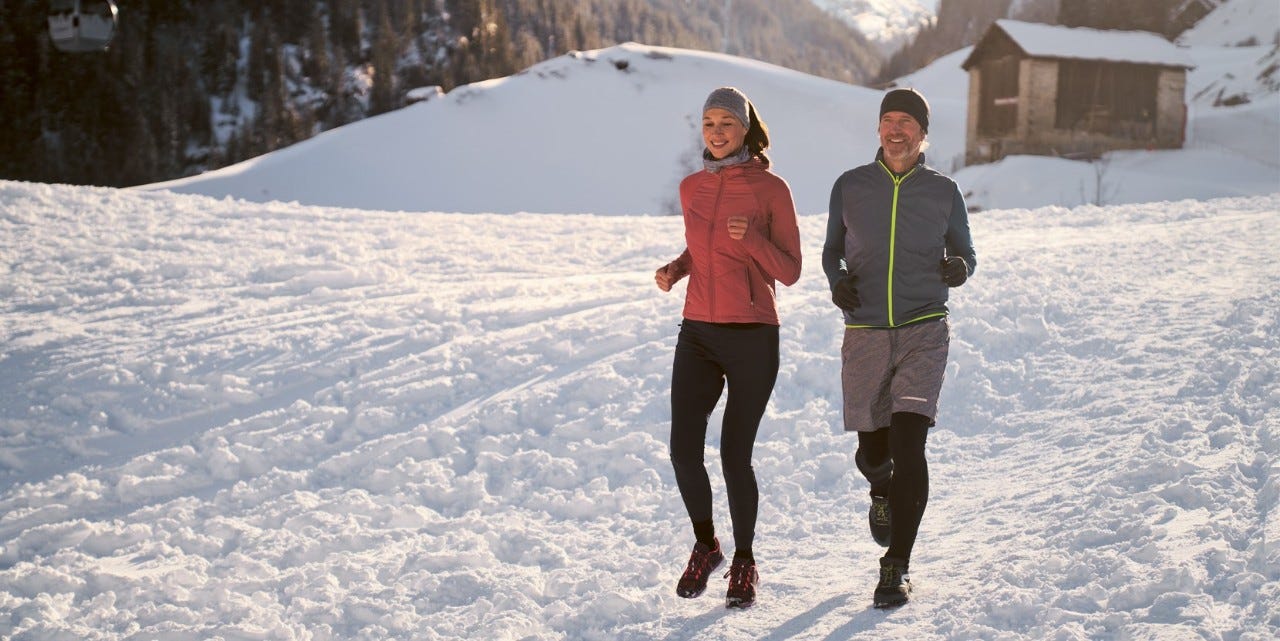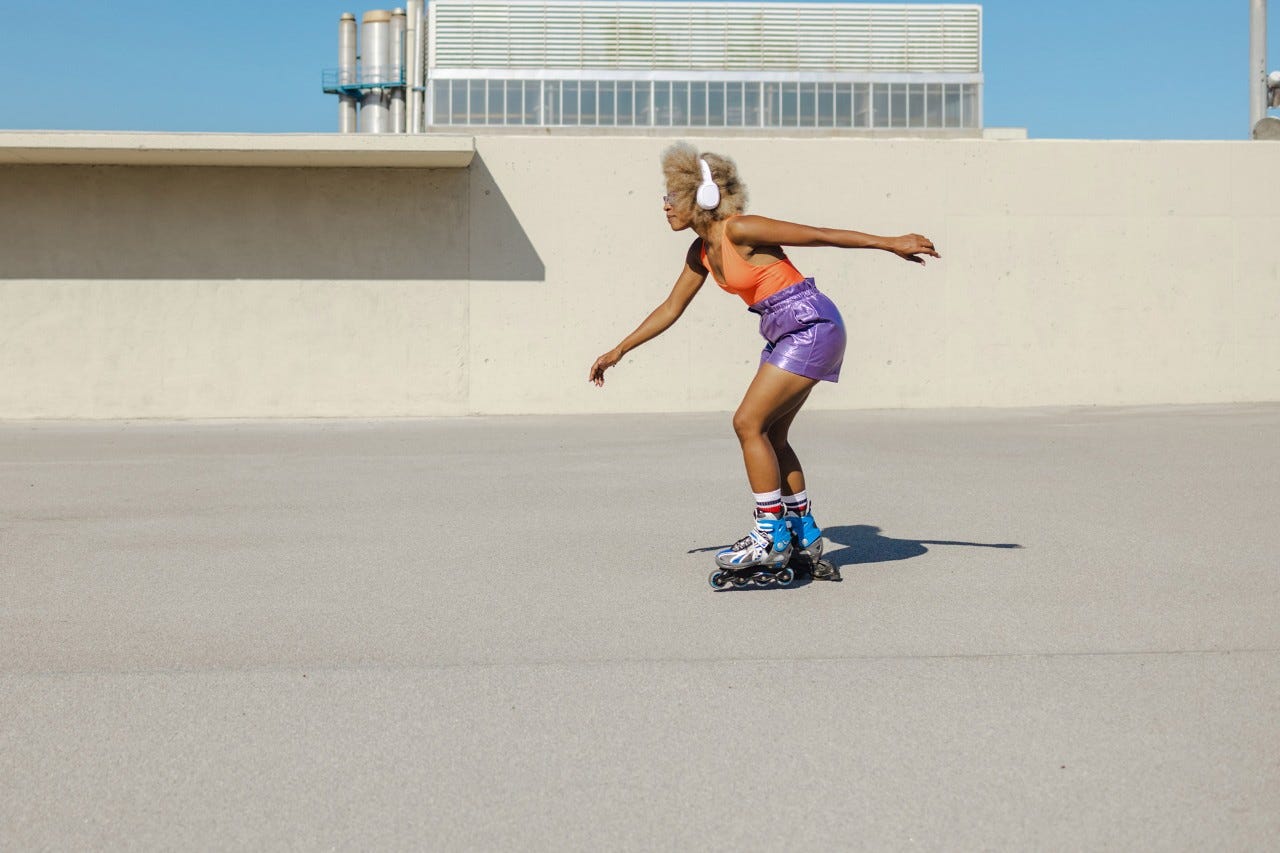Cross-country skiing: give it a go
Whether you prefer the classic technique or skate skiing, cross-country skiing is booming . A few tips for beginners.

“It’s never too late to start,” says Marc Steur, dispelling fears for anyone who is reluctant to try the long and narrow skis. As head trainer of Nordic sports at the Engelberg sports secondary school, he works day-to-day with the next generation of young, ambitious cross-country skiers. If you get the technique right, cross-country skiing is a great sport and fitness programme for all ages. Steur advises against simply setting off one day on a whim. “If your technique is wrong from the start, it is very difficult to go back and correct it,” he says. Cross-country skiing newbies are shown step-by-step how to adopt the right technique under the supervision of qualified cross-country ski instructors.
The classic cross-country skiing technique is easier
Beginners should first think about whether they want to learn classic or skate style. “The classic technique is closer to a natural movement, with the steps being asymmetrical, i.e. executed alternating right-left, with the skis parallel. The direction of the skis is thereby given and therefore quite easy,” explains Steur. The classic technique is certainly a good place to start for beginners looking to take their first steps in the snow. You can choose the intensity, from a walking pace to a more sporty rhythm.
Dynamic skate technique: strong core and coordination
Skate skiing has grown increasingly popular in recent years. This involves pushing your feet off sideways away from each other as if you were ice skating. According to Steur, the key elements to master skate skiing are the gliding movement on the skis and controlled use of the arms. “Beginners need to have good coordination and excellent core stability,” explains the expert.
The right equipment
There are subtle differences to what equipment you need depending on your chosen technique. In addition to the sliding surface, classic cross-country skis have climbing aids in the form of small scales or fur surfaces on the base, or they can be treated with grip wax. Skis should exceed the height of the skier by around 20 cm. Ski poles should come up to your chest when placed on the floor. Skating skis on the other hand should only be 10 cm longer than the skier and the ski poles should reach their chin.
160 cross-country skiing areas with 5,500 km of trails
Overshadowed by its many world-renowned alpine skiing destinations, Switzerland also has a lot to offer both devotees and budding fans of cross-country skiing with its beautiful landscapes and infrastructure. As soon as the snow cover reaches a minimum thickness, the cross-country skiing vehicles drive not only in mountain areas but also in the lowlands, tracking varied trails through fields and forests.
If you buy a cross-country ski pass for CHF 140, you’ll have access for an entire season to 5,500 km of cross-country networks nationwide in 160 Swiss cross-country skiing areas and are also doing your bit to help prepare these trails.
Tip: 5 trails for beginners
Marc Steur recommends all beginners choose a route according to their level of skill and expertise. “If you bite off more than you can chew, you’ll soon lose all pleasure in the sport.
-
Engadin – lakes, side valleys and dog trails
A real gem of Swiss cross-country skiing with over 230 km of trails past lakes and through the side valleys of the Engadin. Destinations such as Celerina and Pontresina have been successfully positioning themselves for years as cross-country skiing hot spots. The Engadin offers challenging terrain but also lots of flat tracks which are ideal for beginners.
La Punt is also connected to the cross-country skiing network, where you can join one of three popular Engadin “dog trails”. The easy circular trail stretches from La Punt to Madulain and back. Four-legged friends are welcome to accompany you, also at the Krone La Punt inn located directly on the trail. You’ll find more information here.
-
Obergoms – along the train tracks
Obergoms in the Valais region has been attracting cross-country skiers for many years and boasts a cross-country skiing network of 90 km for both classic and skate skiers. The cross-country skiing area extends over an altitude of between 1,251 and 1,569 metres above sea level and is maintained almost around the clock throughout the winter season by six workers.
The high standard of these trails also attracts various racing events including those for up-and-coming young skiers, the Gommer ski marathon and even international FIS races. What’s more, these trail tickets also include travel by train. This means fatigued cross-country skiers can simply hop in the train in any village and travel back to where they started, something which is especially helpful for beginners.
All twelve villages in the region are located directly on the trail and the hotels in Obergoms all cater for cross-country skiers. Nearly all the hotels have their own ski room and waxing table, etc. You can find more information here.
-
Jura – a vast network
The Jura region has made a name for itself as an incredibly popular destination for advocates of the sport. Around 300 km of groomed cross-country trails for fans of both techniques span like a white net over an area that encompasses the Bernese Jura, the Neuchâtel mountains and the scenic landscape surrounding Biel.
The highest point is the Chasseral in the Bernese Jura at 1,606 metres above sea level. Many ambitious cross-country skiers start training here to get their early form for a successful season in late autumn. However, the region also has lots to offer amateurs and beginners. The first routes are generally groomed and prepared by the end of November. In the bilingual village of Magglingen, overlooking Lake Biel, you can try out a night trail lit until 10 pm throughout the winter season. Here you’ll find one of the most popular places to stay for cross-country skiers – the Lonywood Bed & Breakfast. You’ll find more information here.
-
Engelberg – have fun on the heart trail
Cross-country skiing has gained much more of a name for itself recently in this area of central Switzerland better known as an alpine skiing destination. The Nordic commission, founded two and a half years ago, has expanded and improved upon the existing cross-country skiing network. It offers 43 km of trails, groomed for lovers of both ski techniques at a height of between 1,050 and 1,800 metres above sea level.
Those looking for a bit of a challenge can ski to their heart’s content on the rolling terrain of the Gerschnialp trail. Many promising young elite skiers who are studying at the Engelberg sports secondary school can be spotted training here. The flatter valley trails are more suited to beginners and those who prefer to take things a bit easier. This winter, a special “heart trail” was set up in Engelberg for beginners and anyone who wants to do something for their heart health. The 4 km trail is flat and perfect for anyone new to the sport. You’ll find more information here.
-
Studen – gliding on the flat for lowlanders
Located approximately 50 minutes by car from Zurich is Studen, the cross-country skiing mecca in the Ybrig holiday region. It’s one hour’s drive from Lucerne. The 27 kilometre long circular route is split into five sections offering something for everyone, from beginners to pros. The first three sections of the Studen-Ybrig trail are particularly good for newcomers and offer plenty of flat terrain for gliding.
The trail is wide, which means there’s plenty of room for both classic and skate skiers. You’ll find more information here.Other routes can be found at myswitzerland.com.


